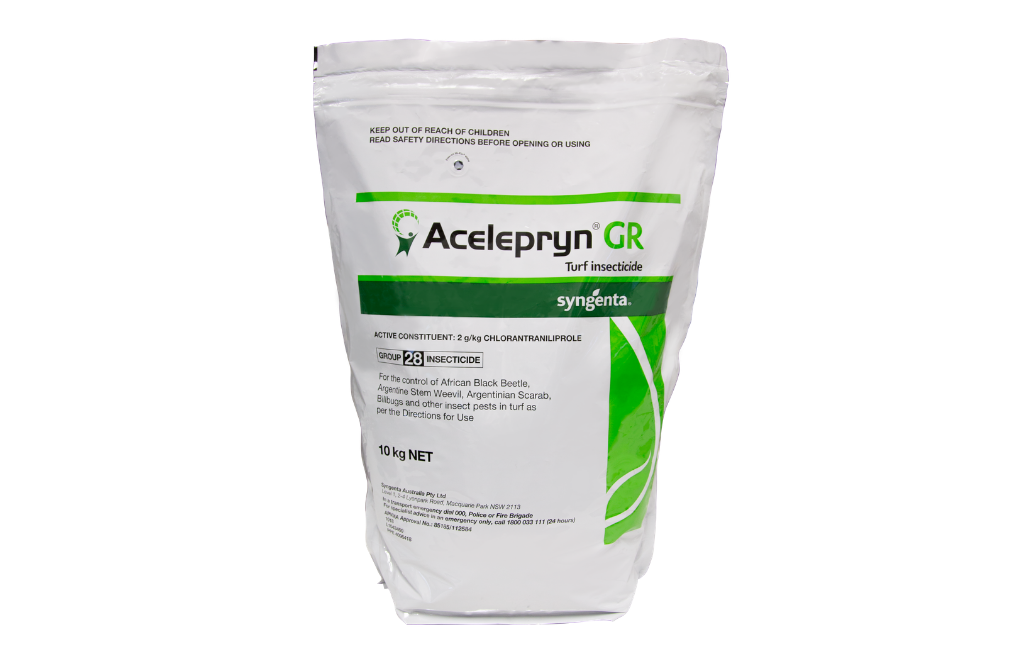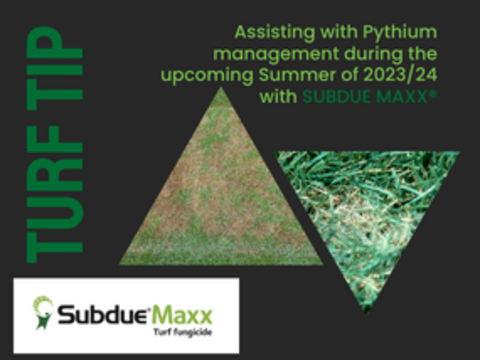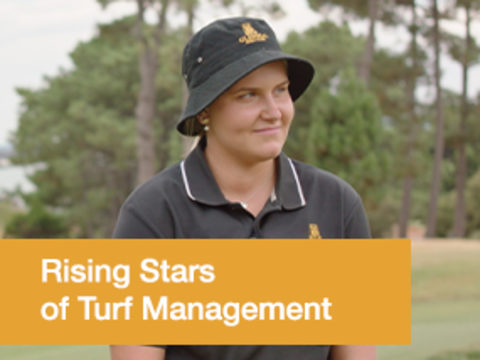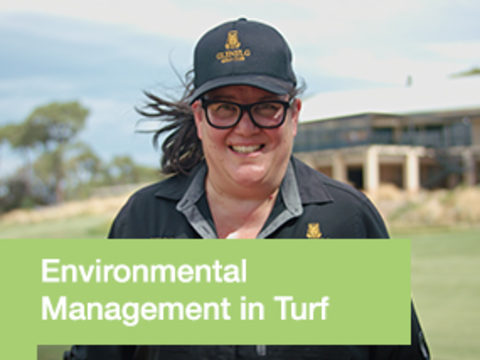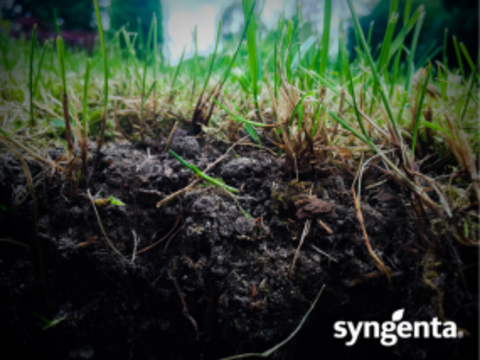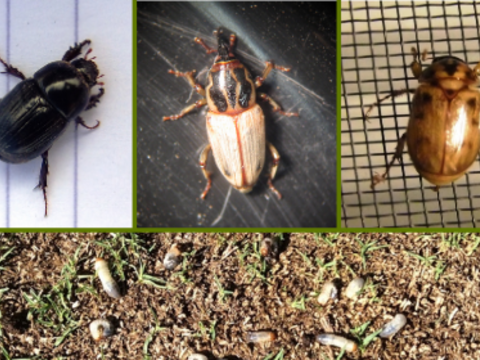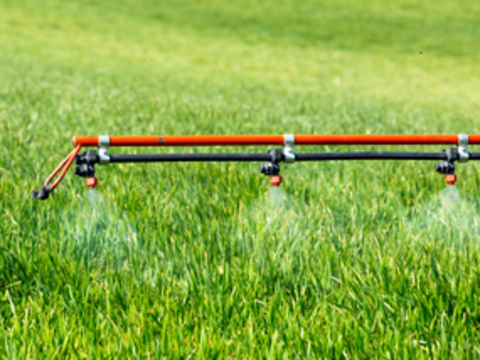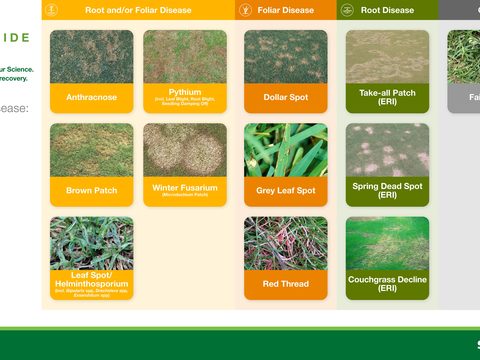Fall Armyworm Continues its March
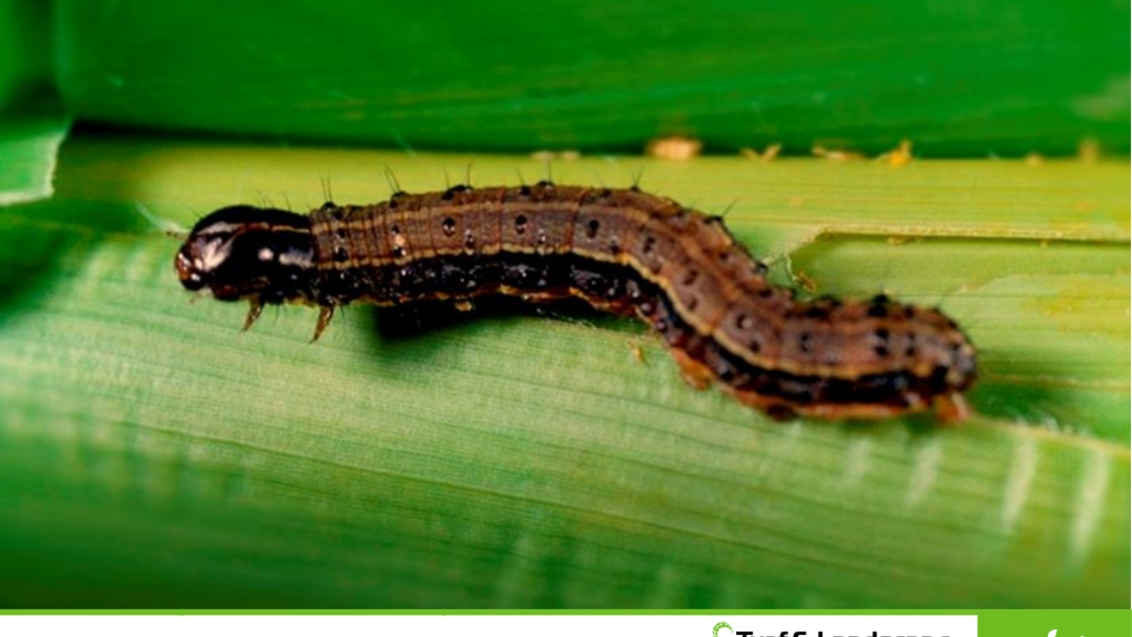
Fall armyworm (FAW), Spodoptera frugiperda, is an exotic pest recently detected in Australia for the first time. FAW was originally found on the Torres Strait islands of Saibai and Erub in January 2020. Since then it has been detected in Queensland, Northern Territory, north-western Australia and northern & central New South Wales. FAW can be easily confused with the Lawn armyworm (LAW), however it is far more destructive than the Lawn Armyworm that we are familiar with in Australia.
This caterpillar has a broad appetite and is known to feed on more than 350 plants, including pastures and turf. Fall armyworm spreads by the flight of adult moths that are capable of flying long distances, aided by the wind. All life stages of FAW can be spread through the transport of infested plant material. Eradication of this new invasive pest is not practical but with early scouting and management, the impact of potential damage and economic loss can be reduced.
Peak activity for FAW is during late summer and early autumn but they can continue activity all year round when conditions are ideal in northern parts of Australia. They favour warm, moist regions and have the potential to spread over most of the coastal and inland arable areas of Australia (Fig 1.). Given the current La Niña weather pattern that the east coast of Australia is experiencing, it is expected that FAW and LAW populations will increase in 2021. Based on movement observed in 2020, it is likely that FAW will continue to spread over the next 1-2 years. With seasonal movement of the pest southward during the warmer period of the year.
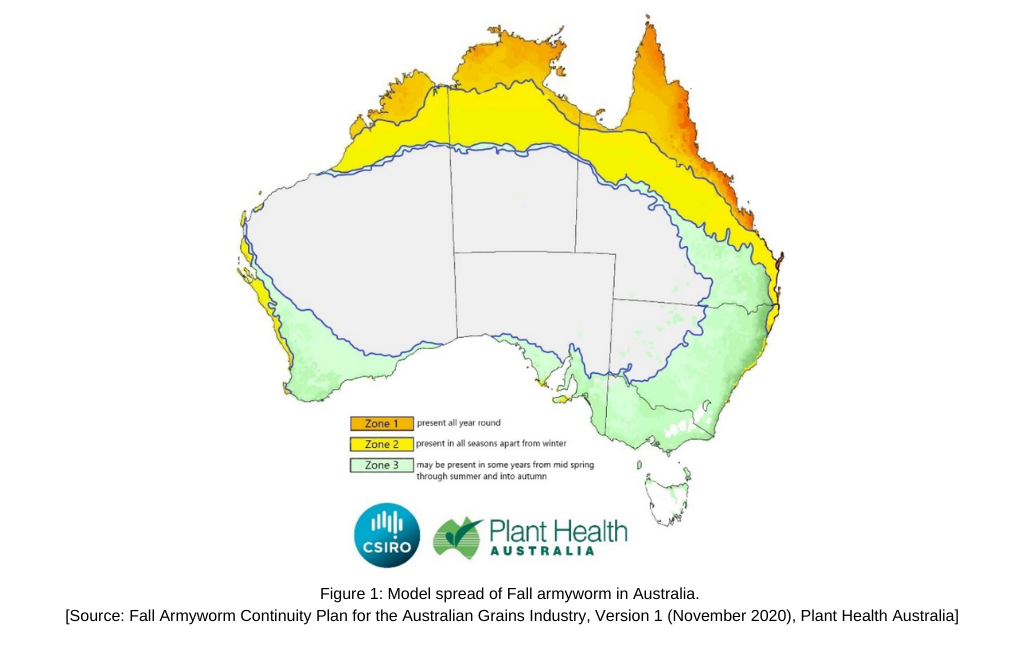
Compared to the Lawn armyworm, Spodoptera mauritia or the Fall armyworm has a greater capacity to disperse across large distances, rapidly moving from northern regions to southern regions. FAW is a more active feeder and will feed throughout the day compared to LAW, which feed predominantly during the night. This means FAW can lead to greater and more widespread damage in shorter periods of time than its close cousin.
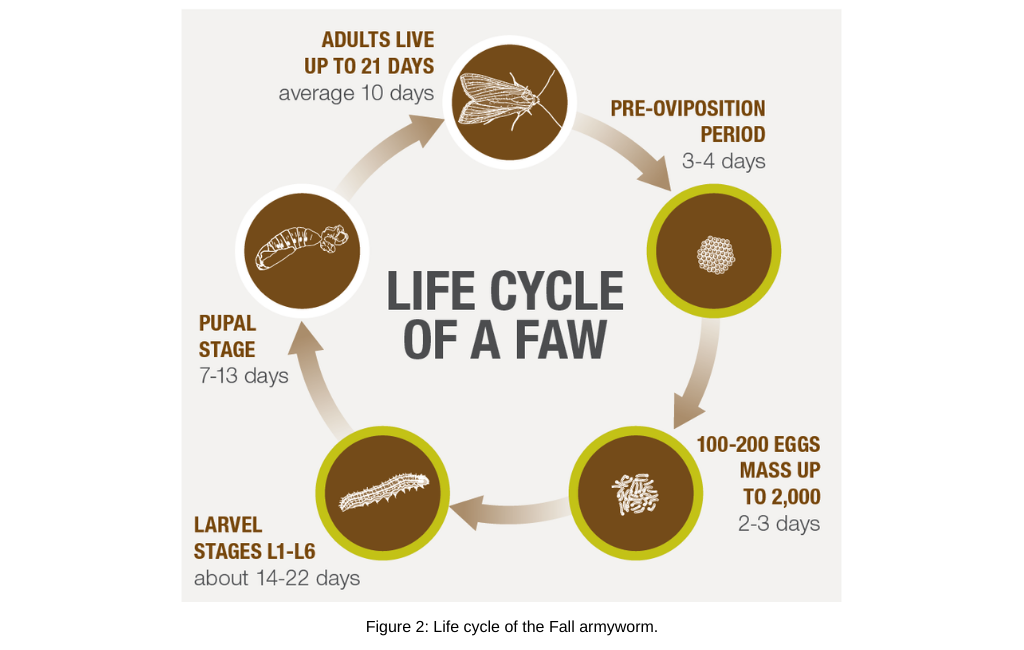
Vigilance is key with FAW. Scouting should start in most locations as soon as the weather begins to warm in spring, and year-round in tropical and subtropical areas. Early detection and management mean initial populations can be kept to a minimal size, making control easier and reducing potential damage.
Key characteristics of Fall armyworm are:
- Adult moths are 15 to 20 mm long, have a wingspan of 32 to 40 mm, and have brown/grey forewings and a white hindwing.
- Male moths have more patterns and a distinct white spot on their forewings.
- The eggs are pale yellow in colour and clustered together in a mass, which often contain 100–200 eggs per mass. Egg masses are attached to foliage with a layer of furry wing scales.
- Larvae are caterpillar like and are light in colour with a larger, darker head. Young larvae (length 6-9 mm) may have a lighter green or yellow colours with a black or orange head. Mature larvae (length 30-36 mm) are mostly brownish colour from light to dark brown with some larvae being more greenish black.
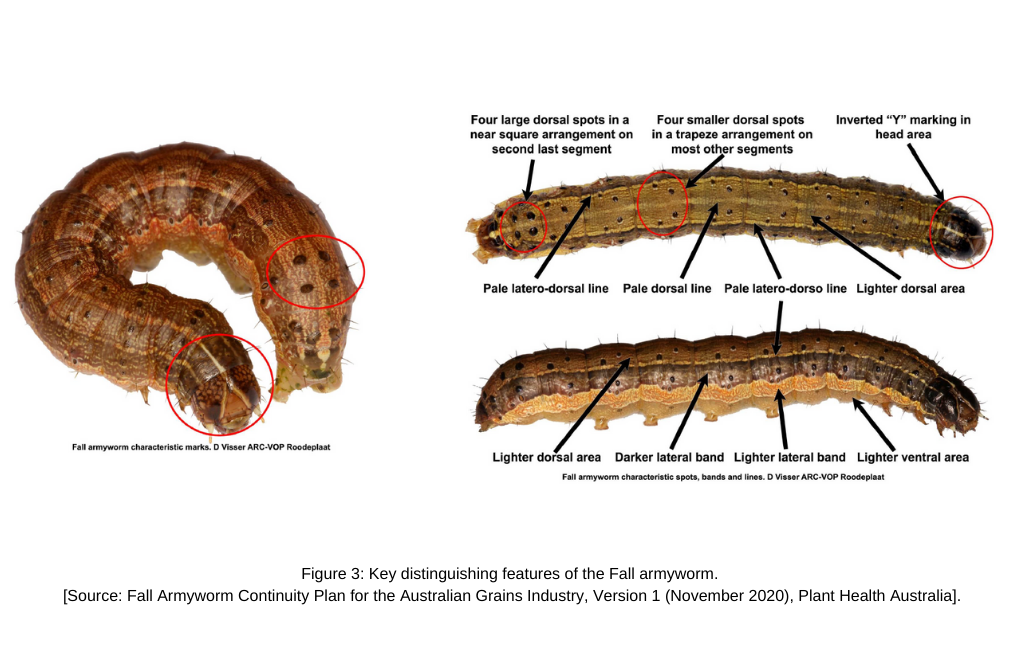
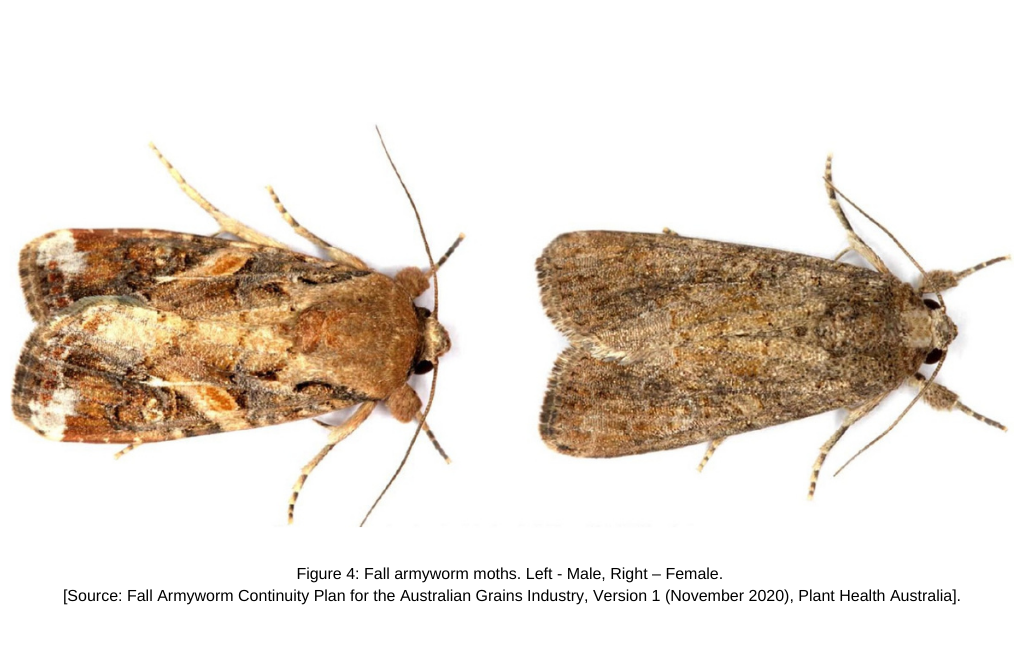
Any detection or potential detection of FAW should be photographed and reported to your state Department for Primary Industry. When control is required, there are two permits available for use in Turf Farms for the control of FAW. Both permits have been submitted to the APVMA by Hort Innovation Australia on behalf of turf producers. One permit is for PROVAUNT Insecticide and the other for ACELEPRYN Insecticide liquid and ACELEPRYN Granules. Importantly both ACELEPRYN and ACELEPRYN GR are registered for emergency use on LAW.
Controlling Fall armyworm and Lawn armyworm
ACELEPRYN Insecticide is a next generation of insecticide, offering powerful long-term control whilst being exempt from Poison Scheduling by the APVMA. ACELEPRYN has a demonstrated knockdown ability, as well as providing residual control. Research has demonstrated two months protection from additional outbreaks in many situations. For best results and to ensure that these destructive insects don’t invade your turf applications scouting should be considered from February and March 2021 depending on your location in Australia.
Fall armyworm will continue its march across Australia in 2021. This destructive pest will be with us for the near future, but with careful scouting and management we can limit its impact. Early identification and treatment will ensure your turf product stays healthy and of the highest quality.
For any additional information on Fall armyworm and its management, please reach out to your local Syngenta Territory Sales Manager.
